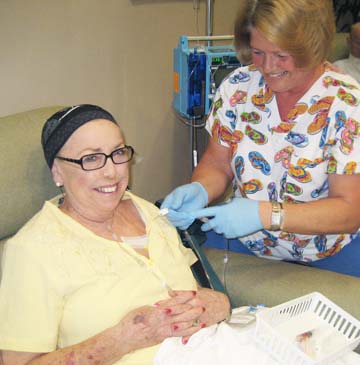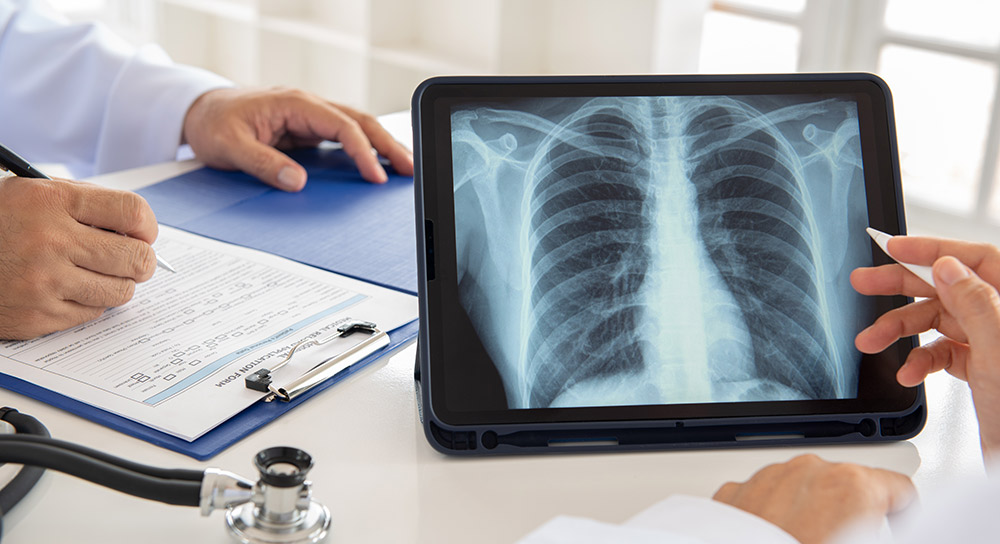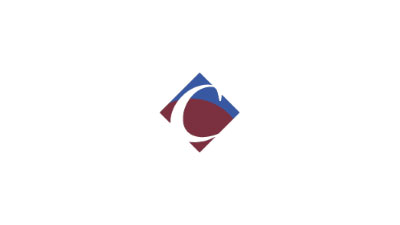When Edwards was transferred to Community Regional Medical Center for a higher level of care, doctors were hoping her cancer was small enough to be treated by the area’s only CyberKnife — a knifeless, painless high-tech surgical procedure where patients undergo incisionless treatments.
But Jane’s cancer was fast-growing so she was referred to Community Regional’s Lung Nodule Program — one of only a handful of its kind throughout the country.
The Lung Nodule program provided Edwards an expedited treatment approach designed to give a faster diagnosis and treatment for those with lung cancer.
This cutting-edge program works in an expedited manner where patients are evaluated by a team of specialized clinicians — all targeted to occur within a week of referral. This can make a big difference for patients like Edwards, who benefit by having reduced waiting time from detection to treatment, which ensures a greater likelihood of positive outcomes.
Prior to last year the average patient with lung cancer in the Central Valley waited almost three months for a diagnosis and treatment plan. Part of this delay is the complexity of decisions and the need for multiple specialists to be involved in the decisions.
“One year ago a group of interested specialists from both UCSF Fresno and the private practice community came together to develop a coordinated program to provide care for patients with lung cancer or at risk for lung cancer,” said Dr. Michael Peterson, chief of medicine, UCSF Fresno. “This program puts the patients at the center and brings the doctors to them.”
Dr. Peterson says this has already resulted in much shorter times between presentation and treatment. Patients can remain close to home with their support systems and still receive the highest level of coordinated care.
 Now after her third round of chemo, Edwards had positron emission tomography (PET) to see if her tumor was shrinking with her treatment therapies. A PET scan enables physicians to more accurately diagnose and identify cancer, heart disease and brain disorders.
Now after her third round of chemo, Edwards had positron emission tomography (PET) to see if her tumor was shrinking with her treatment therapies. A PET scan enables physicians to more accurately diagnose and identify cancer, heart disease and brain disorders.
“I’m having a PET scan and then I’ll know if the tumor has shrunk,” said Edwards. “Depending, I’ll get more chemo or radiation … or go home!”
With an upbeat personality, Edwards made great friends with caregivers like registered nurse Carolyn Pierce, who has been by her side during her chemo treatments.
“You have to have a positive attitude to get through cancer,” Edwards says. “It’s very important.”
Edwards said her treatment — even though she’s from out of town — is very convenient because it’s all in one place and she doesn’t have to go from place to place throughout Fresno.
“I know where to go and everything is right here,” Edwards said. “The people are great and compassionate — they know what I’m going through.”
The program also helped Edwards get diagnosed and treated faster. While she was in Fresno, Edwards stayed in a motorhome outside of California Cancer Center for the week during her treatments. Before she came to the program she had to wait for different doctor’s appointments and go to several locations.
Now, a few weeks later, and after her treatments and PET scan, Edwards got a call from Kathy Norkunas, a nurse navigator with the Lung Nodule Program who works with patients like Edwards.
“It’s great news!” Edwards said. “Kathy told me my tumor has shrunk so much you can hardly see it. I got goose bumps on my arms when she told me.”
Edwards said she will still have 33 days of radiation for three to five minutes per day as a follow up to her chemo. She also has six more weeks of chemo, but just for one day a week, and not nearly as strong of a dose as she had before.
“They saved my life,” she said of her caregivers and treatments. “It’s amazing, just amazing.”
Over the last year Edwards credits her caregivers, treatments and positive attitude for helping her through her ordeal.
“When you have cancer, you have it 24 hours a day,” she said. “You can’t get away from it.”
Edwards said planning her 50th wedding anniversary next April with husband Ron really helped her get through her chemo treatments.
“I’m planning a two-week cruise to Hawaii,” she said. “You can’t start too soon for that.”



